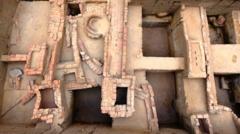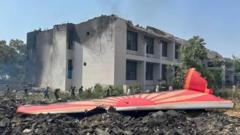Archaeologists have made a groundbreaking discovery beneath a commercial building in London’s financial district, unearthing the foundations of what is believed to be the city's first public building, dating back nearly 2,000 years. The basilica, a vital component of Roman London’s forum, is said to have been the city’s “beating heart,” as described by Sophie Jackson, a director at the Museum of London Archaeology.
The discovery was made during an excavation process initiated after the site was granted planning permission for the construction of a new 32-story mixed-use office tower. Excavators revealed “massive foundations and walls constructed of flint, ragstone, and Roman tile,” indicating the impressive scale of the basilica, which is estimated to have been three stories high. These structural remnants were discovered to exceed dimensions of 33 feet in length, 3 feet in width, and 13 feet in depth, showcasing the basilica as a monumental structure of its time.
Experts suggest that this site likely served key administrative functions, may have held valuable assets, and included a designated area called a tribunal, where magistrates could settle court cases and make critical governance decisions. Jackson posits that this basilica represents not just a physical edifice of Roman London but also a cultural and civic hub that facilitated public life in the early formation of the city.
As urban development continues to reshape the landscape of London, the unearthing of such historical treasures serves as a reminder of the city’s rich past and challenges stakeholders to consider the implications of preserving archaeological sites amid modernization.






















